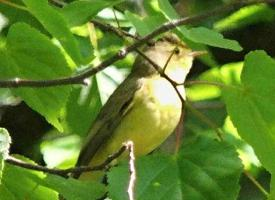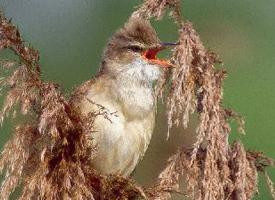
Veszélyeztetettség
| Veszélyeztetett |
Állatleírás
The Aquatic Warbler (Acrocephalus paludicola) is a small, elusive songbird that belongs to the family Acrocephalidae, known for their distinct vocalizations and habitat preferences. This species, characterized by its unique plumage and melodious song, is of particular interest to ornithologists and conservationists due to its status as a globally threatened species.Physically, the Aquatic Warbler is a diminutive bird, typically measuring between 12 to 13.5 centimeters in length and weighing around 11 to 12.5 grams. It exhibits a distinctive plumage that serves as an excellent camouflage within its preferred habitats. The upper parts are a blend of warm brown and beige with dark streaks, allowing it to blend seamlessly into the reedy backgrounds of its environment. The underparts are a lighter buff, with the breast and flanks subtly streaked with darker shades. A striking feature is its supercilium, a pale line above the eye, which contrasts with the darker crown and eyestripe, giving it a distinctive facial pattern. The bird's bill is pointed and well-suited to its insectivorous diet, while its legs are a pale pink, almost blending with some of the lighter tones of its plumage.
The Aquatic Warbler's song is a distinctive, melodious warble, incorporating trills and whistles that can often be heard over long distances, especially during the breeding season. This vocalization plays a crucial role in territorial displays and attracting mates.
Ecologically, the Aquatic Warbler is a migratory bird, breeding in temperate regions of Europe and western Asia in a very specific habitat: lowland peat bogs, sedge marshes, and wet meadows rich in tall vegetation such as reeds and sedges. These habitats are increasingly rare due to agricultural expansion, drainage, and peat extraction, contributing to the species' vulnerable status. After the breeding season, it migrates to sub-Saharan Africa to spend the winter, showcasing an impressive migratory endurance for a bird of its size.
The diet of the Aquatic Warbler primarily consists of insects and other invertebrates, which it adeptly gleans from foliage and the ground. This diet is crucial not only for the adult birds but also for the feeding of their young during the breeding season.
Breeding behaviors of the Aquatic Warbler are intriguing; they are known for their polygynous mating system, where one male mates with several females. The nest is a well-concealed cup of grass and other plant materials, placed close to the ground among dense vegetation. Females lay between 3 to 6 eggs, which they incubate for about two weeks. The chicks are altricial, born blind and featherless, and require intensive care and feeding by the parents before they fledge.
Conservation efforts for the Aquatic Warbler are critical due to its declining population and habitat loss. It is classified as Vulnerable by the International Union for Conservation of Nature (IUCN), with ongoing efforts including habitat restoration, research, and international cooperation to ensure its survival. Protecting the wetland habitats essential for its breeding and migratory stopovers is vital for the conservation of this unique and melodious songbird.
Hasonló állatok
Új állatfotók
Top 10 állat
- Dolphin gull (Leucophaeus scoresbii)
- Diana monkey (Cercopithecus diana)
- Moustached guenon (Cercopithecus cephus)
- Galápagos tortoise (Geochelone nigra complex)
- Japanese macaque (Macaca fuscata)
- Russian tortoise (Testudo horsfieldii)
- Stone loach (Barbatula barbatula)
- Greek tortoise (Testudo graeca)
- Common flying dragon (Draco volans)
- Vendace (Coregonus albula)


